Highlights from
the Fall 2003 trip to the Sierra Madre Oriental
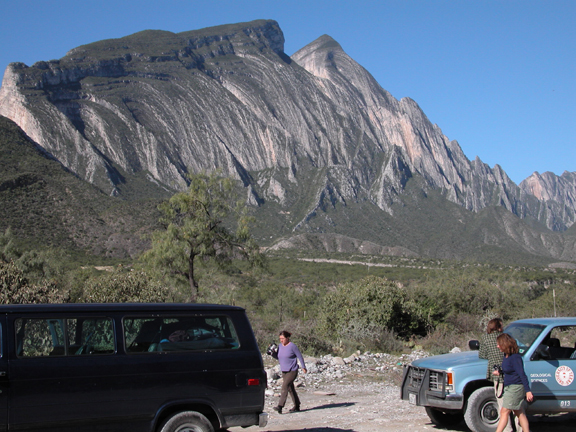
San Blas
anticline in the Monterrey salient of the Sierra
Madre Oriental,
México. This unfaulted, isoclinal fold is typical of large
structures in the region,
except that it is smaller than most, so that the crest has not yet been
eroded
away at the level of the Lower Cretaceous carbonates. Most
anticlines form
two mountain ranges, one for the forelimb and another for the backlimb.
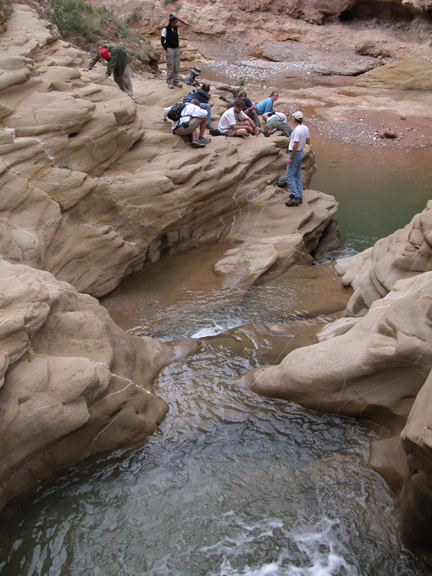
Steve
Laubach (BEG) leading
the group to observe
veins in Jurassic sandstones
near Galeana, México.
Masters candidate Meghan Ward is studying veins in this
area, while Masters candidate Matt Davis is addressing
stratigraphy and larger structures.
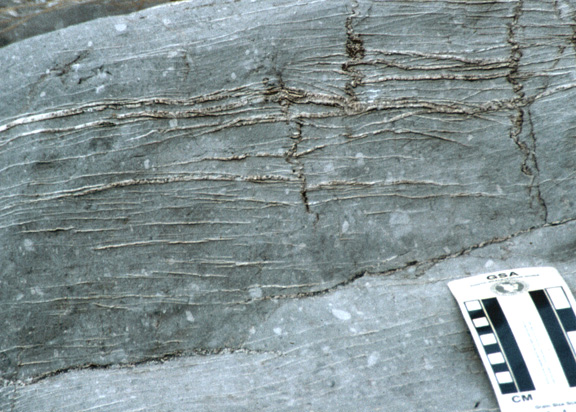
Vein cluster in
Cretaceous carbonate strata at Cañón
Escalera
near Monterrey, México. Fracture clusters are the
dissertation
focus of PhD candidate Leonel Gomez. The veins pictured
here probably developed during burial diagenesis (Marrett
and Laubach, 2001), which is the subject of PhD candidate
Faustino Monroy's dissertation.
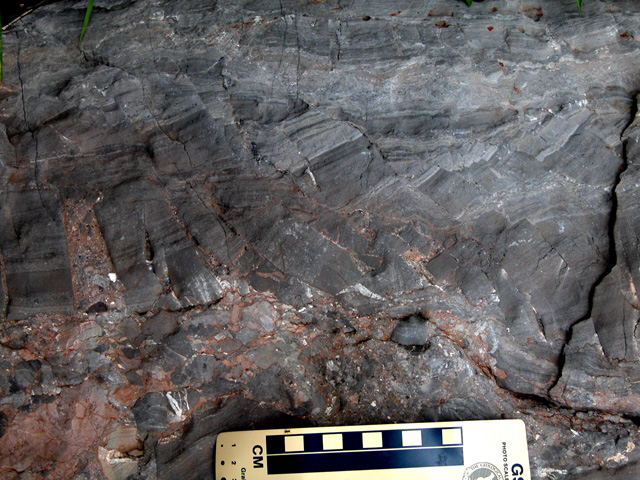
Domino
fault blocks in Lower Cretaceous dolostones at Cañón
Cortinas
near Monterrey, México. Note the growth strata on top
(!), demonstrating
that these faults formed during deposition rather than during the
Laramide
orogeny. Timing relations for faults in this unit are the
thesis topic for
Masters candidate John Hooker. PhD candidate Younis
Altobi is
searching for the contractional counterpart in basinal strata, to
test the
hypothesis that gravitational spreading drove syndepositional
deformation.
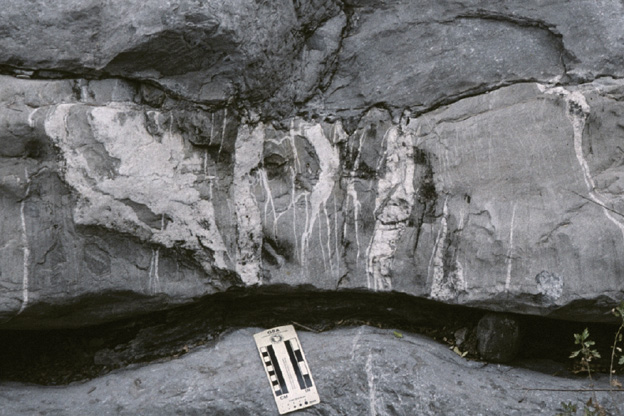
Boudinage
of a dolostone layer, which necked and eventually broke,
between adjacent layers of limestone that did not fracture at
Cañón
de las Palmas, near Monterrey, México. No one
is studying
the boudinage structures yet. How about you?



